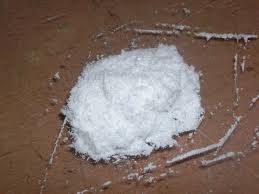Blog
Ketamine Crystal Pictures

Ketamine Crystal Pictures, In recent years, the internet has seen a rising interest in the term “Ketamine Crystal Pictures,” especially across forums and social platforms where users seek to identify or verify the substance. Ketamine, a dissociative anesthetic used legally in medicine and veterinary science, also has a growing underground presence as a recreational drug. This article provides insight into what ketamine crystals typically look like, the reasons people search for such images, and the risks associated with them.
What Are Ketamine Crystals?
Ketamine is usually found in liquid form for medical use, but when it enters the illicit drug market, it’s often converted into a powdered or crystal form. The crystals of ketamine can vary in shape and size, but they generally appear as translucent, white, or slightly off-white shards. Under light, they might resemble broken pieces of glass or coarse sea salt. This visual similarity to other substances is one reason why people search for “ketamine crystal pictures” — to differentiate between genuine ketamine and potentially harmful adulterants.
Why Do People Search for Ketamine Crystal Pictures?
There are several reasons:
-
Identification: Users or harm-reduction communities may want to compare their substance with images to identify purity or confirm its authenticity.
-
Awareness: Some search for these images out of curiosity, especially after hearing about ketamine in pop culture or news reports.
-
Art and Media: Photographers and visual artists occasionally explore drug-related themes and may look for images for reference.
-
Education: In medical or addiction counseling settings, professionals might use ketamine crystal pictures to educate about drug appearance and associated dangers.
Dangers of Misidentification
Using visual comparison alone to identify a drug is highly unreliable and risky. Ketamine sold on the street is often mixed or “cut” with other substances to increase profits, such as caffeine, lidocaine, or even fentanyl in extreme cases. Two different substances may look nearly identical in crystalline form. This makes relying on ketamine crystal pictures a potentially dangerous approach to substance verification.
If someone truly wants to confirm the identity of a substance, reagent testing kits or professional laboratory analysis are the only relatively safe methods. Even then, there are limitations and risks.
Legal and Health Implications
Possession, distribution, or use of ketamine outside of regulated medical contexts is illegal in many countries. Beyond the legal consequences, regular ketamine use can lead to:
-
Cognitive impairment
-
Bladder and urinary tract damage
-
Addiction
-
Psychological issues such as dissociation or depression
No picture can convey the risks ketamine use can pose to both body and mind.
Conclusion
While “Ketamine Crystal Pictures” may satisfy a searcher’s curiosity or attempt at identification, it’s important to remember that looks can be deceiving — and often dangerous. Relying on visuals is not a safe or accurate way to assess any drug. For those concerned about substance use, reaching out to a medical professional or harm reduction service is the safest and most responsible path forward.
